
- Home
- Workshops / Tours
- Diary / Blog
- Galleries
- Foreign Trips
- Tasmania 2016
- NE Queensland 2016
- Western Alps 2016
- NE Spain 2016
- Australia's Wet Tropics 2015
- Australia's Top End 2015
- SW Australia 2015
- Switzerland 2015
- Andalucia 2015
- Belize 2015
- Australia 2014
- Switzerland 2014
- Belize 2014
- Bahama Islands 2014
- Switzerland 2013
- Ecuador 2012-2013
- Florida 2011-2012
- Vancouver Island 2011
- Australia 2010
- Peru 2008
- Bulgaria 2007
- Lesvos 2006
- California 2006
- New Zealand 2005
- Extremadura 2005
- Goa, India 2004
- The Gambia 2003
Southern Peru
25th November-14th December 2008
Colca Canyon
The journey over to the colca canyon started from Arequipa which, with a population of over 1 million, is the second largest city in Peru.
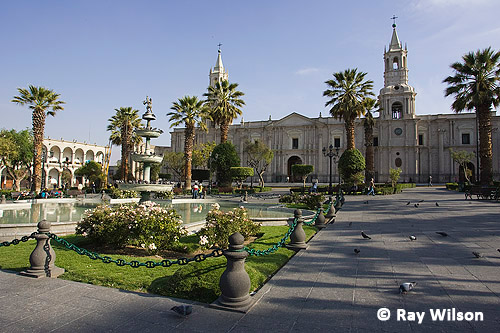
Arequipa
After breakfast, we departed for the long drive over the mountains to Chivay. The road rapidly climbs to an altitude of over 4000m and passes through large areas of flat Altiplano.

A shepherd and his flock on the altiplano
The whole area is very arid, so any area of open water attracts birds to drink...
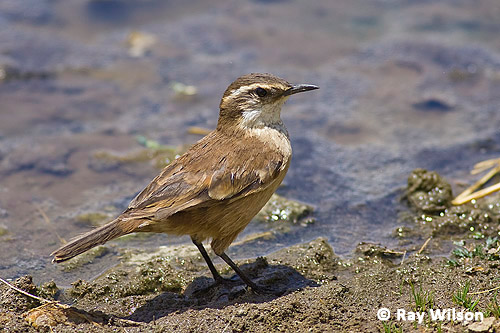
Bar-winged Cinclodes (Cinclodes fuscus)
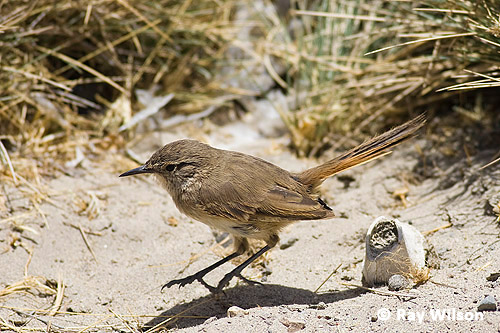
Cordilleran Canastero (Asthenes modesta)
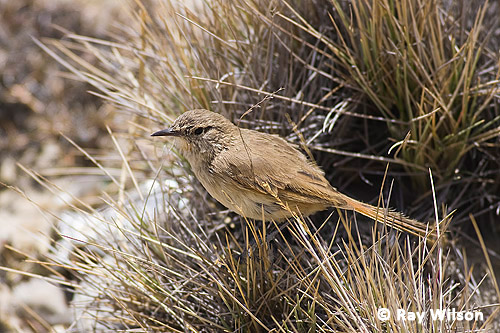
Cordilleran Canastero (Asthenes modesta)
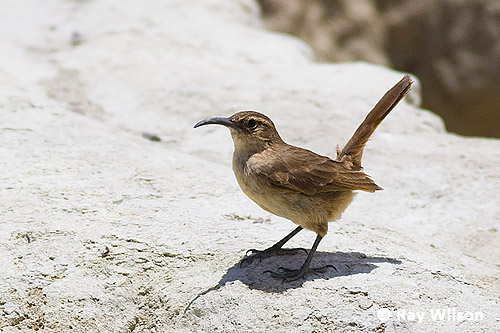
Plain-breasted Earthcreeper (Upucerthia jelskii)
Alpacas, an altitude-adapted member of the Camel family, are the main domestic animals of the region which are farmed for their meat and the incredibly warm and soft wool they produce.
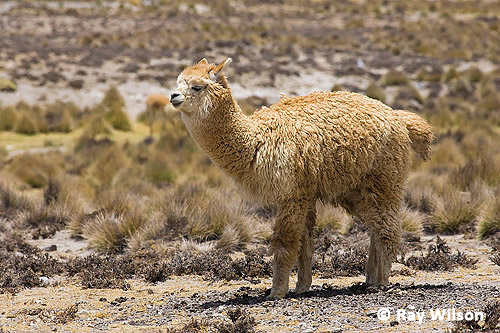
alpaca
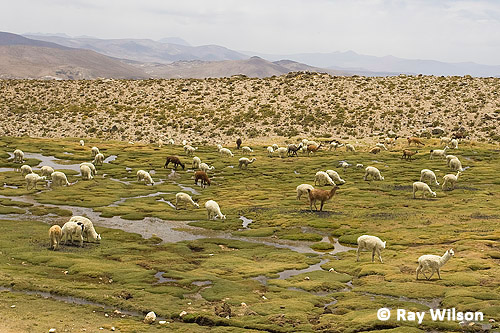
alpacas on the altiplano
Wild herds of the rare Vicuna also inhabit the altiplano. Vicuna wool is even softer and warmer than Alpaca wool, and on a rotational basis of every 2 or 3 years a proportion of the herds are rounded up and sheared.
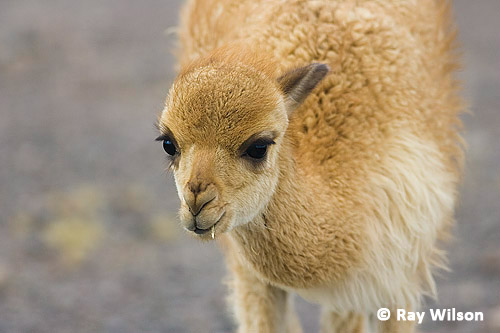
Vicuna (Vicugna vicugna)
The road passes a couple of very high altitude lakes (over 4000m asl) where a variety of Andean specialists can be found...

Giant Coot (Fulica gigantea)
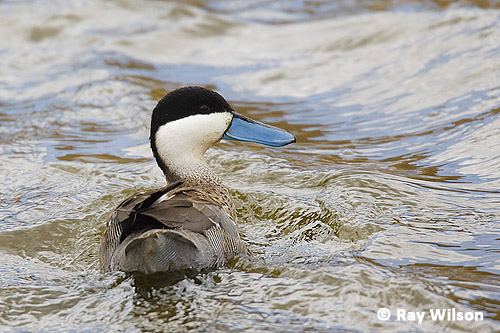
Puna Teal (Anas puna)
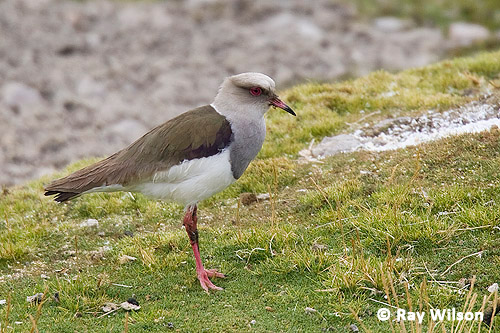
Andean Lapwing (Vanellus resplendens)
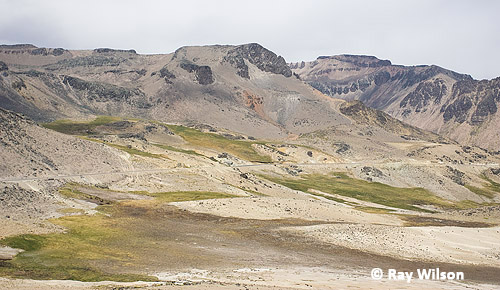
The road continues to slowly gain altitude until it reaches the altitude sickness-inducing high point of 4910m (16,110ft) above sea-level.

The highest point on the road - 4910m above sea-level!
Opposite the layby for the highest point on the road were a few shepherd's huts surrounded by hundreds of small cairns.
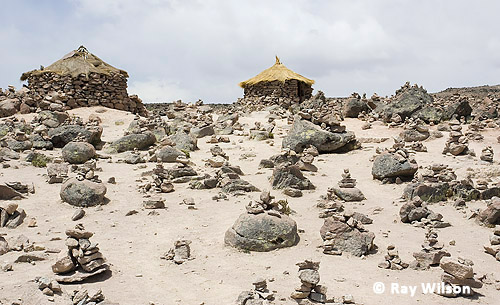
Small shelters on the hill on the opposite side of the road to the viewpoint
At every viewpoint or roadside layby, local women dressed in their finest traditional, hand-embroidered clothes try their best to sell souvenirs to the passing tourists.
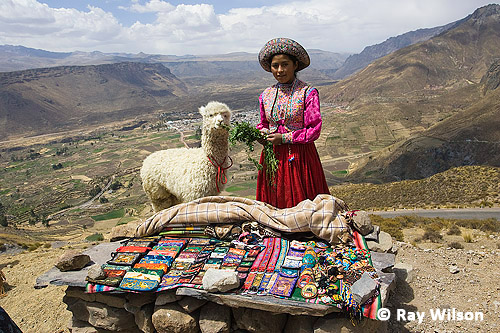
A local girl and her pet alpaca selling tourist souvenirs by the roadside
(the town of Chivay is in the background)
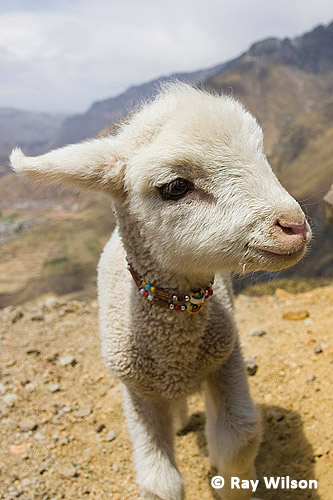 lamb |
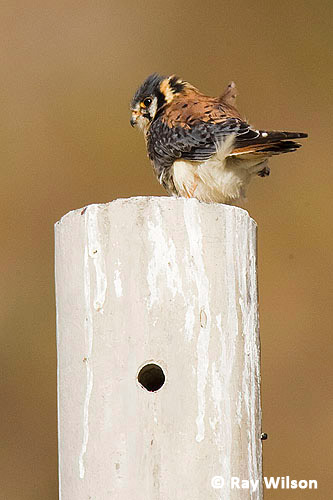 American Kestrel (Falco sparverius) |
From the high point, the road descends rapidly down to the town of Chivay where we were to spend the night. After a delicious late lunch we headed off for a walk along the river to see what we could find...
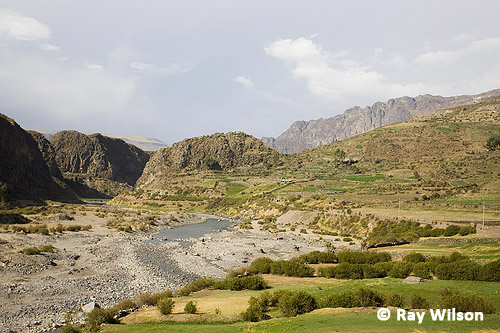
The view from my hostel balcony
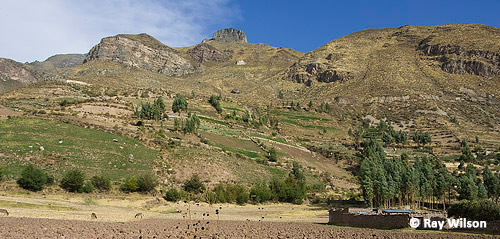
Farmland & hills around Chivay
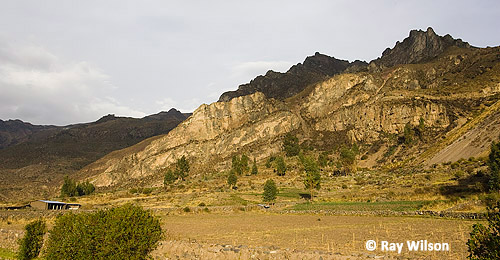
Farmland & hills around Chivay

Crested Duck (Lophonetta specularioides alticola)
The alticola race of Crested Duck is larger than the lower altitude nominate race that is found on coastal lagoons and inland lakes of Chile and Argentina.
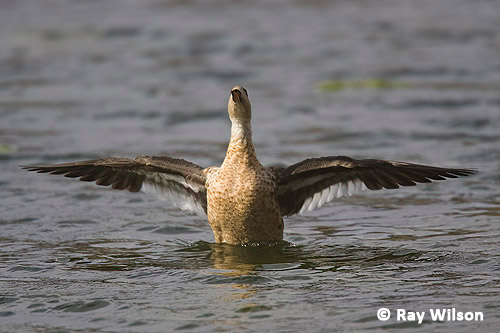
Crested Duck (Lophonetta specularioides alticola)
Rufous-collared Sparrow is one of the commonest birds of Peru and is often associated with human habitation.
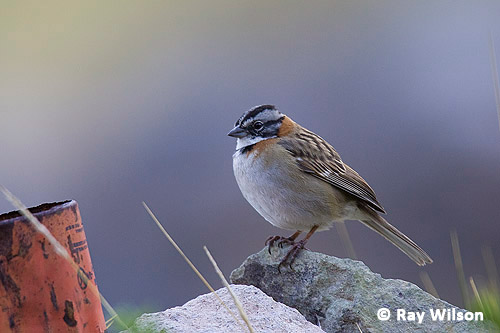
Rufous-collared Sparrow (Zonotrichia capensis)
I found sleeping at altitude very difficult as I hadn't had enough time to acclimatise properly. Chivay is at 3625m asl (11,920ft). I'd definitely advise anyone travelling to this area to spend at least one night in Arequipa (2400m asl) before travelling over the pass to Chivay. Going from sea-level to over 3500m in one day is too much of a shock to the system...
The next morning we set out at dawn to drive to the Colca Canyon. One of the lesser known major canyons of the world, the Colca Canyon has an average depth of about 3400m (2 vertical miles!) along its 100km length...twice the depth of the Grand Canyon in Arizona!

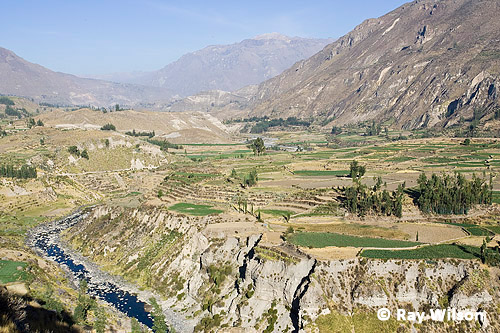
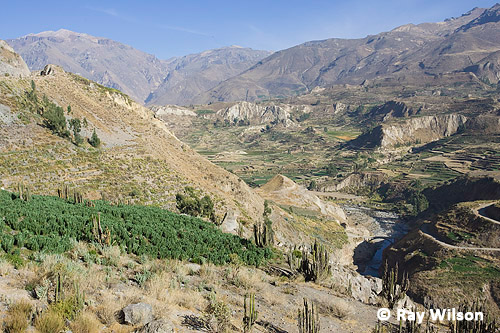
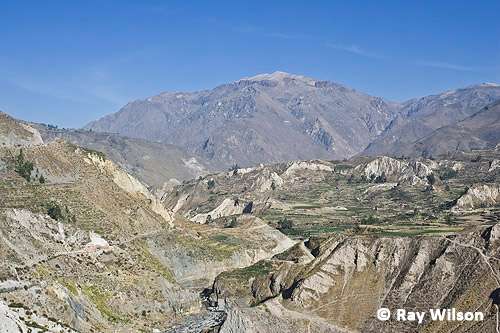
scenery along the Colca valley and canyon
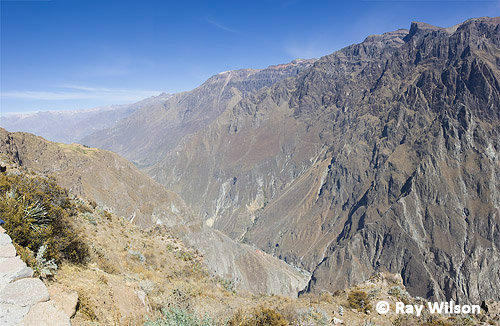
Colca canyon
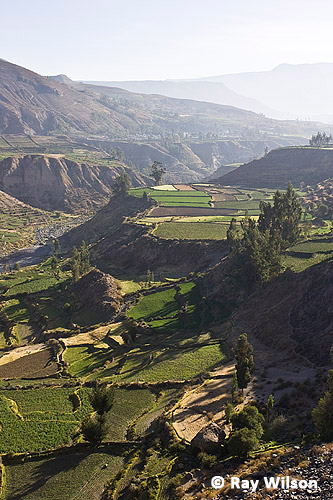 Fields in the Colca Valley |
 Streaked Tit-spinetail (Leptasthenura striata) |
A walk along the canyon rim allowed us to catch up with a few of the characteristic high-altitude birds of the western slope of the Andes...
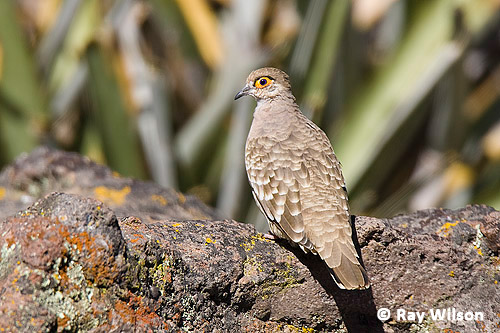
Bare-faced Ground-Dove (Metriopelia ceciliae)
...including numerous individuals of the spectacular Giant Hummingbird.
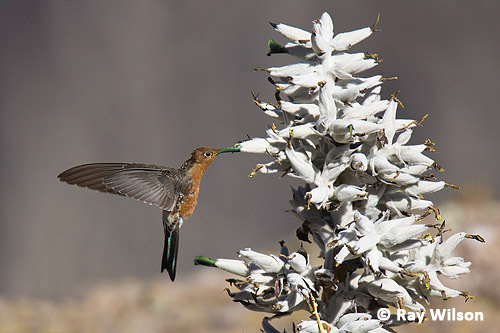
Giant Hummingbird (Patagona gigas)
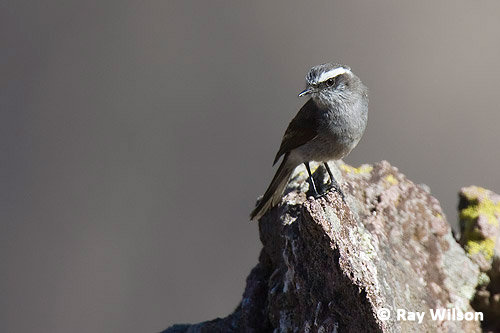
White-browed Chat-Tyrant (Ochthoeca leucophrys)

Mourning Sierra-finch (Phrygilus fruticeti)
Viscachas, looking like a strange-looking cross between a rabbit and a squirrel, are fairly common members of the chinchilla family. Despite their abundance, I never did manage to get a very good photo of them!
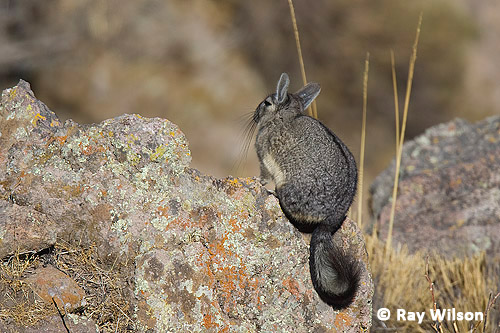
Mountain Viscacha (Lagidium peruanum)
All the tourist buses gather at the Cruz del Condor with huge crowds of people hoping for a glimpse of the iconic bird of the Andes: the enormous Andean Condor.

Cruz del Condor - a very popular tourist spot!
Most people left disappointed that day, as none turned up. We, however, struck lucky and spotted one soaring distantly over the mountains, while driving back towards Chivay. It really was a long way away, and the photo below is severely cropped...Still, at least I saw one and a tiny dot on a photo is better than nothing at all!
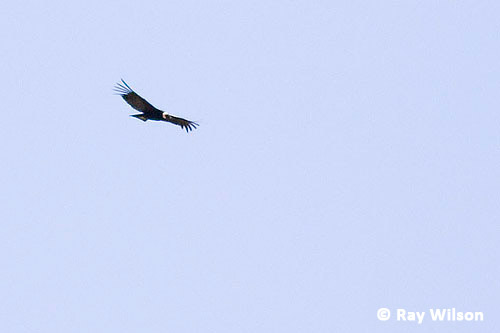
A very distant Andean Condor (Vultur gryphus)

One of the many cone volcanos jutting out of the altiplano
Ray Wilson owns the copyright of all images on this site.
They may not be used or copied in any form without prior written permission.
raywilsonphotography@googlemail.com